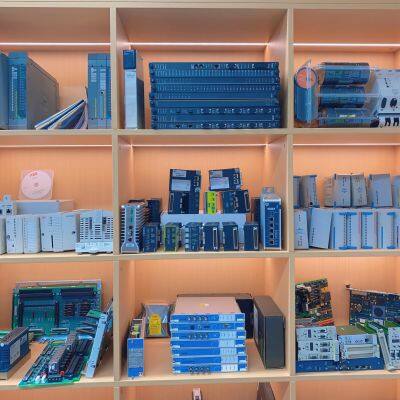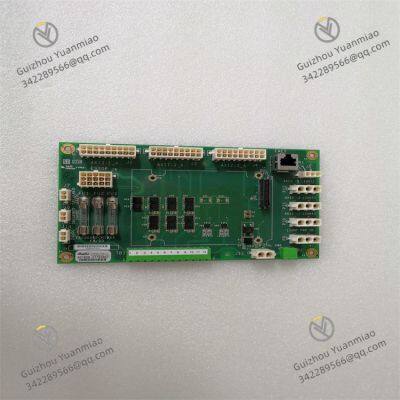Product Description
I. Product Overview
The GE IS200AEPCH1ABC is a key printed circuit board (PCB) component in the Speedtronic Mark VI system. In industrial scenarios, it plays a pivotal role in ensuring the safe and reliable operation of steam and gas turbine systems.
It is a compact rectangular card without a panel. Its space-saving design allows for easy installation in various devices with limited internal space. The overall layout is rational, with components arranged in an orderly manner, facilitating signal transmission and functional implementation.
II. Functional FeaturesCore Functions
1. Communication Processing
As an Ethernet processor card, it serves as a critical communication interface between the controller and other devices or networks. It supports advanced industrial Ethernet protocols, ensuring high-speed, reliable, and real-time data exchange in complex industrial environments. For instance, in the steam turbine control system of a power plant, it can quickly transmit controller commands to various actuators while feeding real-time data collected by sensors back to the controller, thus ensuring the efficient and coordinated operation of the entire system.
2. System Support
This card integrates a series of system, timing, and control functions, which form the foundation for the stable operation of turbines. Its internal timing system can precisely control the transmission and response timing of various signals. The control function monitors and regulates key operating parameters of the turbine, such as rotational speed, temperature, and pressure. In case of abnormal parameters, it can quickly make adjustments to prevent equipment failures.
Auxiliary Board Functions
The auxiliary board integrated with the IS200AEPCH1ABC further enhances its capabilities. The auxiliary board is equipped with connectors, integrated circuits (ICs), and various other components. Connectors enable physical connection with other modules or devices, ensuring unobstructed signal transmission paths. Integrated circuits undertake key tasks such as signal processing and logical operations—for example, amplifying, filtering, and performing analog-to-digital conversion on input signals to ensure that data is accurately processed by the main card. Other components like capacitors, resistors, and diodes work in synergy to provide stable power supply for the circuit and realize functions such as signal isolation and protection, comprehensively improving the performance and reliability of the entire module.

III. Technical Parameters
Electrical Parameters
1. Voltage Range
The nominal operating voltage is generally 24V DC, but specific values may vary depending on different application scenarios and system versions. In practical use, power supply must strictly comply with the voltage range specified in the equipment manual to ensure stable operation of the module and avoid damage caused by overvoltage or undervoltage.
2. Current Consumption
Current consumption varies by configuration. As an industrial Ethernet module, it features typical low-power characteristics. While meeting the requirements of high-speed data transmission and complex function processing, it effectively reduces the overall energy consumption of the system and improves energy utilization efficiency.
Network Parameters
1. Ethernet Ports
It is equipped with multiple Ethernet ports for establishing extensive connections with different devices or networks. These ports support standard Ethernet speeds, such as 10/100/1000 Mbps (Gigabit Ethernet). Appropriate speeds can be flexibly selected based on actual network environments and data transmission requirements to meet the data transmission needs of industrial projects of different scales.
2. Supported Protocols
It typically supports common industrial communication protocols such as TCP/IP and Modbus TCP. The TCP/IP protocol ensures versatility and compatibility across different network environments, while Modbus TCP is widely used in the field of industrial automation. This facilitates data interaction with various devices that support this protocol, enabling seamless communication and collaborative work between devices.
Environmental Parameters
1. Operating Temperature Range
It has a wide operating temperature range, usually between -40°C and 70°C, allowing it to adapt to temperature changes in various harsh industrial environments. It can operate stably whether in outdoor cold winter conditions in northern regions or high-temperature workshops in hot summer in southern regions, ensuring that equipment operation is not affected by ambient temperature.
2. Storage Temperature
The storage temperature range is -40°C to 85°C. Even during long-term non-use, the module remains undamaged by temperature within this wide range, extending its service life and storage stability.
3. Humidity
It can operate normally in environments with humidity up to 95% (non-condensing) and has excellent moisture resistance. This reduces the risk of faults such as electrical short circuits and corrosion caused by high ambient humidity, ensuring stable operation in high-humidity industrial sites like coastal factories and humid chemical workshops.
4. Vibration Resistance
The design fully considers vibration factors in industrial environments, enabling it to withstand industrial vibrations of a certain intensity. Even in vibrating environments generated by equipment operation, it maintains stable electrical performance and physical structural integrity, ensuring that communication and control functions are not disrupted by vibrations.
Physical Parameters
1. Dimensions
Specific module dimensions can be found in the technical data sheet. Its compact design allows for easy installation and integration even in control cabinets with limited space, facilitating equipment layout and installation by system integrators and improving the space utilization of the system.
2. LED Indicators
It is equipped with multiple LED indicators, which are used to display power status, network activity, and diagnostic information (such as communication errors). Through these indicators, operation and maintenance personnel can quickly and intuitively understand the working status of the module, promptly identify and resolve potential issues, and improve the convenience and efficiency of equipment maintenance.
3. Bus Interface
It communicates with the system controller via a backplane or a dedicated communication interface, ensuring efficient and stable data transmission. This enables close collaboration with the entire control system and guarantees the integrity and reliability of the system.
IV. Application Fields
Power Generation Industry
In power plants, whether for steam turbine generator sets in thermal power generation or gas turbine power generation equipment, the IS200AEPCH1ABC plays a key role. It establishes a reliable communication bridge between the turbine control system and other networked devices (such as sensors, actuators, and monitoring systems). Sensors collect real-time operating parameters of the turbine, such as steam pressure, temperature, and rotational speed. This data is quickly transmitted to the controller through the module. After the controller performs analysis and processing based on preset control strategies, it transmits control commands to the actuators via the module, realizing precise regulation of the turbine's operating status and ensuring stable and efficient power generation by the generator set.
Oil and Gas Industry
In the process of oil and gas exploration and processing, gas turbines are widely used to drive equipment such as compressors and pumps. The IS200AEPCH1ABC ensures real-time communication between the control system and external equipment in the control systems of these devices. For example, in natural gas transmission pipelines, gas turbine-driven compressors need to adjust their operating status in real time based on parameters such as pipeline pressure and flow rate. The module is responsible for quickly transmitting these parameter data to the control system and conveying adjustment commands issued by the control system to the compressor actuators, ensuring stable natural gas transmission and improving production efficiency and safety.
Manufacturing Industry
Large-scale automated production lines in the manufacturing industry, such as those for automobile manufacturing and steel production, also use power equipment like turbines. The IS200AEPCH1ABC provides communication support for the control systems of these turbines, enabling coordinated work of equipment in all links of the production line. For example, in an automobile manufacturing plant, turbine-driven equipment is responsible for providing power. The module connects the turbine control system to the automated control system of the production line, precisely controlling the operation of the turbine according to production process requirements, ensuring efficient and stable operation of the production line, and improving product quality and production efficiency.


GE IS200AEPAH1AFD Printed Circuit Board
GE DS200UCPBG6AFB I/O Engine CPU Board
GE IS200BPPBH2CAA Power Supply Module
GE IS200ECTBG1ADE Exciter Contact Terminal Board
GE IS200EXHSG3REC Relay Driver Board
GE DS200TCQCG1AJD RST Overflow Board
Bently Nevada 135785-02C System Display
TRICONEX PLM3900N Process Logic Module
FOXBORO E69F-T12-JRS Field Mounted Current to Pneumatic Converter
EMERSON KJ3203X1-BA2 13P0085X022 Discrete I/O Module
EMERSON VE4001S2T2B4 Discrete Input Card
Honeywell CC-PUIO31 Process Universal Input/Output Module
 yezi
Hi there! Welcome to my shop. Let me know if you have any questions.
yezi
Hi there! Welcome to my shop. Let me know if you have any questions.


